-

May
21
ASAS Foundation Week - Taking Stock - Special Edition - May 21, 2025

ASAS Foundation Week - Taking Stock - Special Edition
May 21, 2025
Read more
-

May
20
ASAS Foundation Week - Taking Stock - Special Edition - May 20, 2025

ASAS Foundation Week - Taking Stock - Special Edition
May 20, 2025
Read more
-

May
19
ASAS Foundation Week - Taking Stock - Special Edition - May 19, 2025

ASAS Foundation Week - Taking Stock - Special Edition
May 19, 2025
Read more
-

May
15
Interpretive Summary: Farmers’ attitudes toward animal welfare

Farm animal production has undergone significant transformations in the last 60 years, associated with globalization, population growth, increasing affluence, and the resulting demand for animal products. Altogether, this has driven a significant growth in the global number of animals and continuous changes in the production systems in response to different environmental, social, and economic challenges.
Read more
-

May
15
Interpretive Summary: Welfare perspectives on the management of pregnant, nonlactating dairy cattle during the winter months in pasture-based systems
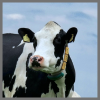
Pasture-based dairy systems aim to match feed demand with home-grown feed supply by maximizing the amount of pasture in the cows’ diet. This is achieved through concentrated (or ‘compact’) seasonal calving where cows are typically dried off together in autumn and calve in late winter/early spring within a short timeframe (e.g., 78% within 6 wk) so that peak milk production coincides with peak grass growth and by maintaining cows at grass for extended periods (Kelly et al., 2020). While such systems were traditionally seen as extensive, intensification has occurred, leading to discussions about welfare challenges (Mee and Boyle, 2020).
Read more
-

May
15
Interpretive Summary: Heat stress amelioration for pasture-based dairy cattle: challenges and opportunities
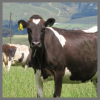
Societal scrutiny of animal welfare in food production systems is intensifying. In the dairy sector, the impact of heat stress on cow productivity, health, and welfare is a growing global concern, particularly with increasing temperatures and weather variability predicted to become more extreme (Nguyen et al., 2016). Excessive heat can negatively impact biological functioning including milk production, health, and reproduction (Kadzere et al., 2002), and in severe circumstances, it can cause suffering, reduce quality of life, or even lead to death (Polsky and von Keyserlingk, 2017).
Read more
-

May
15
Interpretive Summary: Welfare implications of poor gilt selection standards in commercial pig production systems
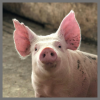
Gilt selection has always been a critical task in the global pig industry. From local breeders within herd book farms to selection specialists within large integrated multisite producers, having a quality selection of incoming great-grand-parent, grand-parent, and parent animals is a core baseline requirement and fundamental for generational success. Key aspects of solid selection have changed over the years, mainly driven by the increased understanding that selection as an outcome of youngstock development achieves desired production results (Patterson and Foxcroft, 2019).
Read more
-

May
15
Interpretive Summary: An examination of the factors that influence consumer intention to purchase higher welfare meat and milk
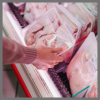
There is growing societal concern for farm animal welfare and interest in production conditions (European Commission, 2022). In many countries, quality assurance labels have been established to communicate that products have been produced from animals reared on higher welfare-certified farms. In this way, consumers can choose to play a role in driving farm animal welfare improvements through their product purchases (Christensen et al., 2019).
Read more
-

May
15
Interpretive Summary: A framework for a comprehensive animal welfare label: scientific, logistic, and ethical challenges
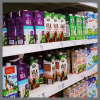
At least nine of the 27 EU member states have national food labeling schemes with animal welfare claims, and there is a growing plethora of private animal welfare labels (AWL), e.g., as part of the marketing strategy of retail companies (Lundmark et al., 2018; EC, 2022; Stygar et al., 2022). The impact of these labels on the welfare of farmed animals is generally considered disappointing (but see Mullan et al., 2016, 2022). The multitude of labels often confuse the consumer, and there seems to be a clear need for simplifying the existing state of play of these labeling schemes (BEUC, 2021; Forbes, 2021; Promarket, 2021; EC, 2022).
Read more
-

May
08
Interpretive Summary: Examination of the role of the rumen in zinc metabolism

Zinc (Zn) is an essential trace mineral that plays a crucial role in maintaining intestinal barrier function and structure. This research aimed to expand our understanding of the role of the rumen epithelium in Zn metabolism in ruminants. Using 4 ruminally fistulated steers, 2 experiments were conducted to evaluate Zn’s disappearance from the rumen.
Read more
-

May
08
Interpretive Summary: Predicting dry matter intake in cattle at scale using gradient boosting regression techniques and Gaussian process boosting regression with Shapley additive explanation explainable artificial intelligence...

Reducing the ecological footprint of animal agriculture is crucial for sustainable precision agriculture. Accurately predicting dry matter intake (DMI) in cattle is a key strategy to achieve this goal. In this study, we utilized animal intake data with climatic data to predict the dry matter intake using advanced machine learning (ML) models including Gaussian Process Boosting (GPBoost).
Read more
-

May
08
Interpretive Summary: Effects of a fiber-degrading enzyme on ileal digestibility of amino acids and fiber and total tract digestibility of energy and fiber in growing pigs fed diets with high level of corn distillers grains with solubles
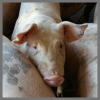
As bioethanol production grows, corn distillers dried grains with solubles (cDDGS) have become a popular, cost-effective feed ingredient for pigs, replacing corn and soybean meal. However, cDDGS are high in fiber, which can reduce nutrient digestibility in pigs. Supplementation of exogenous enzymes like xylanase and cellulase to cDDGS diets can improve nutrient absorption and feed efficiency by breaking down these fibers and altering the gut environment.
Read more
-

May
08
Interpretive Summary: Effects of dietary metabolizable energy density and inclusion of oxidized soybean oil on the growth performance, serum biochemical parameters, redox status, and wooden breast incidence of broilers
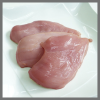
Dietary nutrients not only play a crucial role in growth and pectoralis muscle production of broilers but also are associated with the occurrence of pectoralis myopathies. Soybean oil is commonly added to animal diets to increase energy density.
Read more
-

May
08
Interpretive Summary: The effects of a plant-based and a plant- and marine-based n-3 oil supplement on behavioral reactivity, heart rate variability, and plasma fatty acid profile in young healthy horses
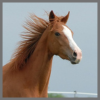
Reactive behaviors in horses can impact the welfare and safety of both the horse and the handler. Reductions in reactivity have been observed in horses-fed diets with increased fat and low starch and sugar, but the effects of specific fatty acids on reactive behaviors in horses is unknown. Therefore, the objective of the study is to investigate the impacts of camelina oil (providing the plant-based α-linolenic acid, ALA) and a mix of camelina and algae oil (providing the marine-based eicosapentaenoic acid, EPA, and docosahexaenoic acid, DHA) on plasma fatty acids, heart rate variability, and reactive behaviors.
Read more
-

May
01
Interpretive Summary: Changes in the skeletal muscle transcriptome due to the intramuscular administration of lidocaine in wether lambs
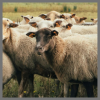
Lidocaine, a typical local anesthetic, is used during medical procedures to reduce pain by blocking nerve signals. Researchers often apply lidocaine at biopsy sites to ease discomfort, assuming it does not affect characteristics of the tissue relevant to their study.
Read more
-

May
01
Interpretive Summary: Genetic parameters for image-based estimations of swine feet and leg conformation traits
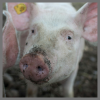
Breeding herd retention poses significant challenges to the swine industry, with lameness ranking as a leading cause for breeding pig removal from the herd. Structural conformation is typically evaluated through visual observation; however, these methods are subjective and can vary in accuracy between observers. This study developed and assessed a computer-based algorithm for extracting feet and leg conformation traits from images of pigs.
Read more
-

May
01
Interpretive Summary: Whole pulse ingredient inclusion in macronutrient-balanced diets increased fecal concentrations of propionic acid but not total bile acids in healthy adult large-breed dogs after 20 weeks

Pulse ingredients are heavily used in the global pet food industry, but little is known about how diets that contain different amounts of total dietary fiber and starch affect the fecal bile acids (BAs) and metabolites produced. The objective of this study was to understand how the inclusion of pulse ingredients at the sacrifice of grains or pea starch affected the excretion of fecal BAs and metabolites, such as short-chain fatty acids (SCFAs) in healthy adult dogs.
Read more
-

May
01
Interpretive Summary: Evaluation of nutritional values of defatted black soldier fly (Hermetia illucens) larvae meal using the precision-fed cecectomized rooster assay

This study investigates the use of defatted black soldier fly larvae meal (BSFLM) as an alternative protein source for pet food. Two BSFLM raised on wheat (BSFLM-W) or corn (BSFLM-C) substrates were compared with traditional protein sources, whole egg powder (WEP) and chicken meal (CM). The precision-fed cecectomized rooster assay was employed to determine the protein quality of these ingredients.
Read more
-

May
01
Interpretive Summary: Negative energy balance by feed deprivation affects the adipose miRNome in the lactating goat

Ruminant adipose tissue (AT) stores lipids for use in productive functions during negative energy balance (NEB) which occurs during early lactation or undernutrition. The molecular mechanisms underlying the nutritional regulation of gene expression in AT from lactating goats are not fully understood.
Read more
-

May
01
Interpretive Summary: Rethinking sustainability: recognizing animal welfare’s critical role
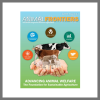
This special issue of Animal Frontiers is the legacy of two major scientific events related to farm animal welfare that took place in Florence, Italy in 2024. The first was the 9th International Conference on the Welfare Assessment of Animals at Farm Level (WAFL) organized in collaboration with the Health and Welfare Commission of the European Federation of Animal Science (EAAP).
Read more
 MayASAS Foundation Week - Taking Stock - Special Edition - May 21, 2025
MayASAS Foundation Week - Taking Stock - Special Edition - May 21, 2025 ASAS Foundation Week - Taking Stock - Special Edition
ASAS Foundation Week - Taking Stock - Special Edition MayASAS Foundation Week - Taking Stock - Special Edition - May 20, 2025
MayASAS Foundation Week - Taking Stock - Special Edition - May 20, 2025 ASAS Foundation Week - Taking Stock - Special Edition
ASAS Foundation Week - Taking Stock - Special Edition MayASAS Foundation Week - Taking Stock - Special Edition - May 19, 2025
MayASAS Foundation Week - Taking Stock - Special Edition - May 19, 2025 ASAS Foundation Week - Taking Stock - Special Edition
ASAS Foundation Week - Taking Stock - Special Edition MayInterpretive Summary: Farmers’ attitudes toward animal welfare
MayInterpretive Summary: Farmers’ attitudes toward animal welfare Farm animal production has undergone significant transformations in the last 60 years, associated with globalization, population growth, increasing affluence, and the resulting demand for animal products. Altogether, this has driven a significant growth in the global number of animals and continuous changes in the production systems in response to different environmental, social, and economic challenges.
Farm animal production has undergone significant transformations in the last 60 years, associated with globalization, population growth, increasing affluence, and the resulting demand for animal products. Altogether, this has driven a significant growth in the global number of animals and continuous changes in the production systems in response to different environmental, social, and economic challenges. MayInterpretive Summary: Welfare perspectives on the management of pregnant, nonlactating dairy cattle during the winter months in pasture-based systems
MayInterpretive Summary: Welfare perspectives on the management of pregnant, nonlactating dairy cattle during the winter months in pasture-based systems Pasture-based dairy systems aim to match feed demand with home-grown feed supply by maximizing the amount of pasture in the cows’ diet. This is achieved through concentrated (or ‘compact’) seasonal calving where cows are typically dried off together in autumn and calve in late winter/early spring within a short timeframe (e.g., 78% within 6 wk) so that peak milk production coincides with peak grass growth and by maintaining cows at grass for extended periods (Kelly et al., 2020). While such systems were traditionally seen as extensive, intensification has occurred, leading to discussions about welfare challenges (Mee and Boyle, 2020).
Pasture-based dairy systems aim to match feed demand with home-grown feed supply by maximizing the amount of pasture in the cows’ diet. This is achieved through concentrated (or ‘compact’) seasonal calving where cows are typically dried off together in autumn and calve in late winter/early spring within a short timeframe (e.g., 78% within 6 wk) so that peak milk production coincides with peak grass growth and by maintaining cows at grass for extended periods (Kelly et al., 2020). While such systems were traditionally seen as extensive, intensification has occurred, leading to discussions about welfare challenges (Mee and Boyle, 2020). MayInterpretive Summary: Heat stress amelioration for pasture-based dairy cattle: challenges and opportunities
MayInterpretive Summary: Heat stress amelioration for pasture-based dairy cattle: challenges and opportunities Societal scrutiny of animal welfare in food production systems is intensifying. In the dairy sector, the impact of heat stress on cow productivity, health, and welfare is a growing global concern, particularly with increasing temperatures and weather variability predicted to become more extreme (Nguyen et al., 2016). Excessive heat can negatively impact biological functioning including milk production, health, and reproduction (Kadzere et al., 2002), and in severe circumstances, it can cause suffering, reduce quality of life, or even lead to death (Polsky and von Keyserlingk, 2017).
Societal scrutiny of animal welfare in food production systems is intensifying. In the dairy sector, the impact of heat stress on cow productivity, health, and welfare is a growing global concern, particularly with increasing temperatures and weather variability predicted to become more extreme (Nguyen et al., 2016). Excessive heat can negatively impact biological functioning including milk production, health, and reproduction (Kadzere et al., 2002), and in severe circumstances, it can cause suffering, reduce quality of life, or even lead to death (Polsky and von Keyserlingk, 2017). MayInterpretive Summary: Welfare implications of poor gilt selection standards in commercial pig production systems
MayInterpretive Summary: Welfare implications of poor gilt selection standards in commercial pig production systems Gilt selection has always been a critical task in the global pig industry. From local breeders within herd book farms to selection specialists within large integrated multisite producers, having a quality selection of incoming great-grand-parent, grand-parent, and parent animals is a core baseline requirement and fundamental for generational success. Key aspects of solid selection have changed over the years, mainly driven by the increased understanding that selection as an outcome of youngstock development achieves desired production results (Patterson and Foxcroft, 2019).
Gilt selection has always been a critical task in the global pig industry. From local breeders within herd book farms to selection specialists within large integrated multisite producers, having a quality selection of incoming great-grand-parent, grand-parent, and parent animals is a core baseline requirement and fundamental for generational success. Key aspects of solid selection have changed over the years, mainly driven by the increased understanding that selection as an outcome of youngstock development achieves desired production results (Patterson and Foxcroft, 2019). MayInterpretive Summary: An examination of the factors that influence consumer intention to purchase higher welfare meat and milk
MayInterpretive Summary: An examination of the factors that influence consumer intention to purchase higher welfare meat and milk There is growing societal concern for farm animal welfare and interest in production conditions (European Commission, 2022). In many countries, quality assurance labels have been established to communicate that products have been produced from animals reared on higher welfare-certified farms. In this way, consumers can choose to play a role in driving farm animal welfare improvements through their product purchases (Christensen et al., 2019).
There is growing societal concern for farm animal welfare and interest in production conditions (European Commission, 2022). In many countries, quality assurance labels have been established to communicate that products have been produced from animals reared on higher welfare-certified farms. In this way, consumers can choose to play a role in driving farm animal welfare improvements through their product purchases (Christensen et al., 2019). MayInterpretive Summary: A framework for a comprehensive animal welfare label: scientific, logistic, and ethical challenges
MayInterpretive Summary: A framework for a comprehensive animal welfare label: scientific, logistic, and ethical challenges At least nine of the 27 EU member states have national food labeling schemes with animal welfare claims, and there is a growing plethora of private animal welfare labels (AWL), e.g., as part of the marketing strategy of retail companies (Lundmark et al., 2018; EC, 2022; Stygar et al., 2022). The impact of these labels on the welfare of farmed animals is generally considered disappointing (but see Mullan et al., 2016, 2022). The multitude of labels often confuse the consumer, and there seems to be a clear need for simplifying the existing state of play of these labeling schemes (BEUC, 2021; Forbes, 2021; Promarket, 2021; EC, 2022).
At least nine of the 27 EU member states have national food labeling schemes with animal welfare claims, and there is a growing plethora of private animal welfare labels (AWL), e.g., as part of the marketing strategy of retail companies (Lundmark et al., 2018; EC, 2022; Stygar et al., 2022). The impact of these labels on the welfare of farmed animals is generally considered disappointing (but see Mullan et al., 2016, 2022). The multitude of labels often confuse the consumer, and there seems to be a clear need for simplifying the existing state of play of these labeling schemes (BEUC, 2021; Forbes, 2021; Promarket, 2021; EC, 2022). MayInterpretive Summary: Examination of the role of the rumen in zinc metabolism
MayInterpretive Summary: Examination of the role of the rumen in zinc metabolism Zinc (Zn) is an essential trace mineral that plays a crucial role in maintaining intestinal barrier function and structure. This research aimed to expand our understanding of the role of the rumen epithelium in Zn metabolism in ruminants. Using 4 ruminally fistulated steers, 2 experiments were conducted to evaluate Zn’s disappearance from the rumen.
Zinc (Zn) is an essential trace mineral that plays a crucial role in maintaining intestinal barrier function and structure. This research aimed to expand our understanding of the role of the rumen epithelium in Zn metabolism in ruminants. Using 4 ruminally fistulated steers, 2 experiments were conducted to evaluate Zn’s disappearance from the rumen. MayInterpretive Summary: Predicting dry matter intake in cattle at scale using gradient boosting regression techniques and Gaussian process boosting regression with Shapley additive explanation explainable artificial intelligence...
MayInterpretive Summary: Predicting dry matter intake in cattle at scale using gradient boosting regression techniques and Gaussian process boosting regression with Shapley additive explanation explainable artificial intelligence... Reducing the ecological footprint of animal agriculture is crucial for sustainable precision agriculture. Accurately predicting dry matter intake (DMI) in cattle is a key strategy to achieve this goal. In this study, we utilized animal intake data with climatic data to predict the dry matter intake using advanced machine learning (ML) models including Gaussian Process Boosting (GPBoost).
Reducing the ecological footprint of animal agriculture is crucial for sustainable precision agriculture. Accurately predicting dry matter intake (DMI) in cattle is a key strategy to achieve this goal. In this study, we utilized animal intake data with climatic data to predict the dry matter intake using advanced machine learning (ML) models including Gaussian Process Boosting (GPBoost). MayInterpretive Summary: Effects of a fiber-degrading enzyme on ileal digestibility of amino acids and fiber and total tract digestibility of energy and fiber in growing pigs fed diets with high level of corn distillers grains with solubles
MayInterpretive Summary: Effects of a fiber-degrading enzyme on ileal digestibility of amino acids and fiber and total tract digestibility of energy and fiber in growing pigs fed diets with high level of corn distillers grains with solubles As bioethanol production grows, corn distillers dried grains with solubles (cDDGS) have become a popular, cost-effective feed ingredient for pigs, replacing corn and soybean meal. However, cDDGS are high in fiber, which can reduce nutrient digestibility in pigs. Supplementation of exogenous enzymes like xylanase and cellulase to cDDGS diets can improve nutrient absorption and feed efficiency by breaking down these fibers and altering the gut environment.
As bioethanol production grows, corn distillers dried grains with solubles (cDDGS) have become a popular, cost-effective feed ingredient for pigs, replacing corn and soybean meal. However, cDDGS are high in fiber, which can reduce nutrient digestibility in pigs. Supplementation of exogenous enzymes like xylanase and cellulase to cDDGS diets can improve nutrient absorption and feed efficiency by breaking down these fibers and altering the gut environment. MayInterpretive Summary: Effects of dietary metabolizable energy density and inclusion of oxidized soybean oil on the growth performance, serum biochemical parameters, redox status, and wooden breast incidence of broilers
MayInterpretive Summary: Effects of dietary metabolizable energy density and inclusion of oxidized soybean oil on the growth performance, serum biochemical parameters, redox status, and wooden breast incidence of broilers Dietary nutrients not only play a crucial role in growth and pectoralis muscle production of broilers but also are associated with the occurrence of pectoralis myopathies. Soybean oil is commonly added to animal diets to increase energy density.
Dietary nutrients not only play a crucial role in growth and pectoralis muscle production of broilers but also are associated with the occurrence of pectoralis myopathies. Soybean oil is commonly added to animal diets to increase energy density. MayInterpretive Summary: The effects of a plant-based and a plant- and marine-based n-3 oil supplement on behavioral reactivity, heart rate variability, and plasma fatty acid profile in young healthy horses
MayInterpretive Summary: The effects of a plant-based and a plant- and marine-based n-3 oil supplement on behavioral reactivity, heart rate variability, and plasma fatty acid profile in young healthy horses Reactive behaviors in horses can impact the welfare and safety of both the horse and the handler. Reductions in reactivity have been observed in horses-fed diets with increased fat and low starch and sugar, but the effects of specific fatty acids on reactive behaviors in horses is unknown. Therefore, the objective of the study is to investigate the impacts of camelina oil (providing the plant-based α-linolenic acid, ALA) and a mix of camelina and algae oil (providing the marine-based eicosapentaenoic acid, EPA, and docosahexaenoic acid, DHA) on plasma fatty acids, heart rate variability, and reactive behaviors.
Reactive behaviors in horses can impact the welfare and safety of both the horse and the handler. Reductions in reactivity have been observed in horses-fed diets with increased fat and low starch and sugar, but the effects of specific fatty acids on reactive behaviors in horses is unknown. Therefore, the objective of the study is to investigate the impacts of camelina oil (providing the plant-based α-linolenic acid, ALA) and a mix of camelina and algae oil (providing the marine-based eicosapentaenoic acid, EPA, and docosahexaenoic acid, DHA) on plasma fatty acids, heart rate variability, and reactive behaviors. MayInterpretive Summary: Changes in the skeletal muscle transcriptome due to the intramuscular administration of lidocaine in wether lambs
MayInterpretive Summary: Changes in the skeletal muscle transcriptome due to the intramuscular administration of lidocaine in wether lambs Lidocaine, a typical local anesthetic, is used during medical procedures to reduce pain by blocking nerve signals. Researchers often apply lidocaine at biopsy sites to ease discomfort, assuming it does not affect characteristics of the tissue relevant to their study.
Lidocaine, a typical local anesthetic, is used during medical procedures to reduce pain by blocking nerve signals. Researchers often apply lidocaine at biopsy sites to ease discomfort, assuming it does not affect characteristics of the tissue relevant to their study. MayInterpretive Summary: Genetic parameters for image-based estimations of swine feet and leg conformation traits
MayInterpretive Summary: Genetic parameters for image-based estimations of swine feet and leg conformation traits Breeding herd retention poses significant challenges to the swine industry, with lameness ranking as a leading cause for breeding pig removal from the herd. Structural conformation is typically evaluated through visual observation; however, these methods are subjective and can vary in accuracy between observers. This study developed and assessed a computer-based algorithm for extracting feet and leg conformation traits from images of pigs.
Breeding herd retention poses significant challenges to the swine industry, with lameness ranking as a leading cause for breeding pig removal from the herd. Structural conformation is typically evaluated through visual observation; however, these methods are subjective and can vary in accuracy between observers. This study developed and assessed a computer-based algorithm for extracting feet and leg conformation traits from images of pigs. MayInterpretive Summary: Whole pulse ingredient inclusion in macronutrient-balanced diets increased fecal concentrations of propionic acid but not total bile acids in healthy adult large-breed dogs after 20 weeks
MayInterpretive Summary: Whole pulse ingredient inclusion in macronutrient-balanced diets increased fecal concentrations of propionic acid but not total bile acids in healthy adult large-breed dogs after 20 weeks Pulse ingredients are heavily used in the global pet food industry, but little is known about how diets that contain different amounts of total dietary fiber and starch affect the fecal bile acids (BAs) and metabolites produced. The objective of this study was to understand how the inclusion of pulse ingredients at the sacrifice of grains or pea starch affected the excretion of fecal BAs and metabolites, such as short-chain fatty acids (SCFAs) in healthy adult dogs.
Pulse ingredients are heavily used in the global pet food industry, but little is known about how diets that contain different amounts of total dietary fiber and starch affect the fecal bile acids (BAs) and metabolites produced. The objective of this study was to understand how the inclusion of pulse ingredients at the sacrifice of grains or pea starch affected the excretion of fecal BAs and metabolites, such as short-chain fatty acids (SCFAs) in healthy adult dogs. MayInterpretive Summary: Evaluation of nutritional values of defatted black soldier fly (Hermetia illucens) larvae meal using the precision-fed cecectomized rooster assay
MayInterpretive Summary: Evaluation of nutritional values of defatted black soldier fly (Hermetia illucens) larvae meal using the precision-fed cecectomized rooster assay This study investigates the use of defatted black soldier fly larvae meal (BSFLM) as an alternative protein source for pet food. Two BSFLM raised on wheat (BSFLM-W) or corn (BSFLM-C) substrates were compared with traditional protein sources, whole egg powder (WEP) and chicken meal (CM). The precision-fed cecectomized rooster assay was employed to determine the protein quality of these ingredients.
This study investigates the use of defatted black soldier fly larvae meal (BSFLM) as an alternative protein source for pet food. Two BSFLM raised on wheat (BSFLM-W) or corn (BSFLM-C) substrates were compared with traditional protein sources, whole egg powder (WEP) and chicken meal (CM). The precision-fed cecectomized rooster assay was employed to determine the protein quality of these ingredients. MayInterpretive Summary: Negative energy balance by feed deprivation affects the adipose miRNome in the lactating goat
MayInterpretive Summary: Negative energy balance by feed deprivation affects the adipose miRNome in the lactating goat Ruminant adipose tissue (AT) stores lipids for use in productive functions during negative energy balance (NEB) which occurs during early lactation or undernutrition. The molecular mechanisms underlying the nutritional regulation of gene expression in AT from lactating goats are not fully understood.
Ruminant adipose tissue (AT) stores lipids for use in productive functions during negative energy balance (NEB) which occurs during early lactation or undernutrition. The molecular mechanisms underlying the nutritional regulation of gene expression in AT from lactating goats are not fully understood. MayInterpretive Summary: Rethinking sustainability: recognizing animal welfare’s critical role
MayInterpretive Summary: Rethinking sustainability: recognizing animal welfare’s critical role This special issue of Animal Frontiers is the legacy of two major scientific events related to farm animal welfare that took place in Florence, Italy in 2024. The first was the 9th International Conference on the Welfare Assessment of Animals at Farm Level (WAFL) organized in collaboration with the Health and Welfare Commission of the European Federation of Animal Science (EAAP).
This special issue of Animal Frontiers is the legacy of two major scientific events related to farm animal welfare that took place in Florence, Italy in 2024. The first was the 9th International Conference on the Welfare Assessment of Animals at Farm Level (WAFL) organized in collaboration with the Health and Welfare Commission of the European Federation of Animal Science (EAAP).



